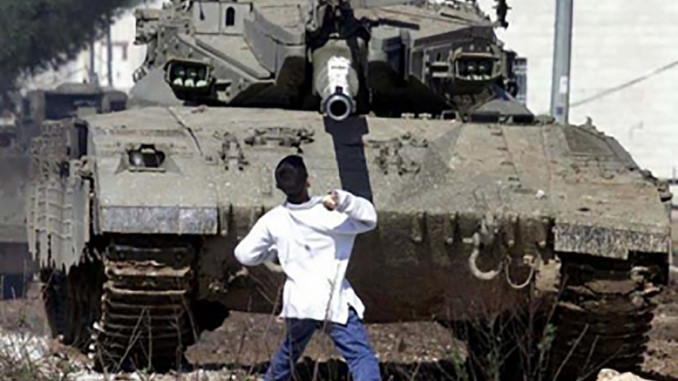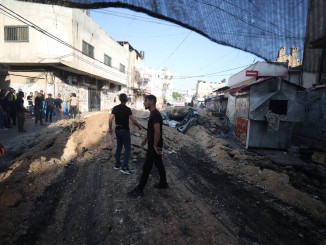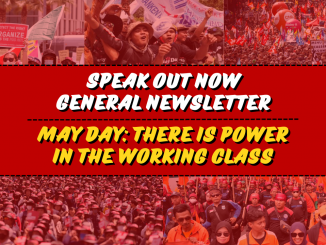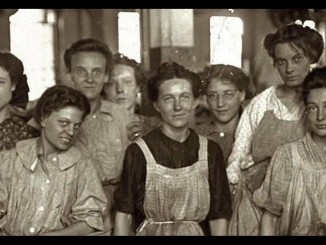
Twenty-two years ago, on September 28, 2000, a massive struggle erupted in the occupied territories of Palestine. The territories are located to the East of the state of Israel, and are home to four million Palestinian people living under military occupation by Israel. The struggle launched in 2000, the Second Intifada, was an outburst of frustration and anger at the false “peace process” that Israel had agreed to after Palestinians made the occupied territories ungovernable thirteen years earlier in an uprising known as the First Intifada. Unlike the First Intifada, the Second Intifada was swiftly met with extreme violence on the part of the Israeli state, militarizing a popular struggle and thus defeating it. Today, the same conditions persist in the occupied territories as in 2000 – millions of Palestinian people living under occupation, economically strangled, and deprived of political rights. Though it failed to achieve liberation for the Palestinian people, the Second Intifada represents an important episode in a long series of mass popular struggles that challenge the foundations of the Israeli military occupation. It was a defeat, but it was not in any way the end of the story of Palestinian resistance.
The Historical Backdrop
To understand the Second Intifada, it is important to understand what came before. The state of Israel was established by a war of ethnic cleansing, expelling a million Palestinians from their land in 1948. Then, in 1967, the West Bank and Gaza Strip territories of Palestine were occupied during a war between Israel and the neighboring Arab states. The occupied territories – the West Bank and the Gaza Strip – were thereafter governed by the Israeli military. The United States has always been complicit in the occupation. Israel’s defeat of the Arab states in 1967 proved that Israel was a useful ally in the U.S.’s project of controlling the Middle East. Since 1967, the U.S. has poured billions of dollars of military aid into Israel beginning with $450 million a year in 1967 and today reaching $3.8 billion a year.
Illegal Settlements and Cheap Labor
From 1967 onward, the Israeli government looked the other way while illegal settlements were set up by Israeli citizens who claimed that the bible was their deed to the land of Palestine. Deprived of any means of developing industry and agriculture in their own territory, hundreds of thousands of Palestinians traveled into Israel to work the poorest paid jobs in service and construction, much like tens of millions of workers from Latin America do in the U.S. today. In 1987, clashes between settlers and Palestinian villagers sparked a general uprising when the Palestinian people said enough is enough!
The First Intifada
In 1987, the Palestinian people, men, women, and children revolted in a mass uprising against military occupation. The Israeli military was unprepared for this general uprising, or intifada. The word intifada means “shaking off,” and that’s precisely what the Palestinians did. They shook off the chains of military occupation, undercutting the network of spies and blackmailed informants that the Israeli military used to control the people. Israel was forced to take drastic measures to maintain the occupation.
The PLO and Oslo
Israel began negotiations with the Palestine Liberation Organization (PLO). The PLO was the Palestinian nationalist organization that had waged a military struggle against Israel for decades. In 1987 their leadership was exiled in Tunisia, and in fact they had never counted on resistance within Palestine as a strategy. The First Intifada caught them by surprise as much as it did the Israelis.
With the 1993 and 1995 Oslo Accords, Israel promised to gradually loosen its control of the occupied territories and deliver what the Palestinians demanded, a state of their own and a withdrawal of the military occupation. Palestinians were full of hope and optimism after years of struggle during the initial years of the Oslo agreements. The PLO officials led by Yasser Arafat returned from exile and established the Palestinian Authority which had limited control of the internal life of the occupied territories. The important aspects of life in the territories, the borders, the economy, and control of the major roads, remained in the hands of the Israeli military.
Disappointment in the Oslo Accords
Over the course of the Oslo negotiations, it became clear that Israel had no intention of delivering a viable state to the Palestinians. The maps Israeli officials drew up looked like Swiss cheese with huge areas controlled by the Israeli military, and Israeli settlements remaining deep in Palestinian territory. In addition, Israel closed off its borders to Palestinian workers, depriving Palestinians of one of their major sources of income. Palestinian unemployment rose to 50% and meanwhile the number of Israeli settlements in the West Bank and Gaza Strip doubled.
The Second Intifada – an Explosion of Anger
After a few brief years of hope, the Palestinians were boiling over with anger and frustration due to the failure of the Oslo agreement to deliver a better life, let alone an independent state. On September, 14, 2000, Yasser Arafat walked out of the final negotiations between Israel and the PLO hosted by the United States at Camp David. Two weeks later, right-wing Israeli president Ariel Sharon made a provocative move designed to set off the Palestinians. He visited the Al-Aqsa mosque in Jerusalem, the most holy site in Islam. For decades, right wing religious Israelis, the same ones building settlements in the occupied territories, demanded the mosque be torn down so that the biblical Temple of David could be rebuilt. Sharon’s visit to the mosque was a signal designed to provoke the Palestinians.
The Palestinians took to the streets as in 1987, however this time, Israel moved swiftly to militarize the situation. Soldiers opened fire and for the first time the Israeli army used airstrikes and artillery against Palestinian civilians. The army instituted a policy of using heavy rocks to break the arms and legs of captured Palestinians. The Palestinians responded in kind, using guerrilla warfare and suicide attacks against Israeli military targets, and ultimately suicide bombs within Israel itself. The Israeli policy of military force achieved its goal – instead of a mass uprising, they were facing a much weaker military force. The suicide attacks may have satisfied Palestinian desires for vengeance, but they could not match the damage done by Israeli rockets and artillery. Over the course of the Second Intifada, 4,300 civilians, mostly Palestinians, were killed.
An Evolving Strategy
The Palestinian participants in the Second Intifada learned from their experience. Without denying the Palestinian people’s right to rebel by any means, many decided that the strategy of military confrontation was not a winning strategy. Today Palestinians have turned back towards the mass mobilizations as in the First Intifada, informed by the experience by those who fought in the Second Intifada. There have been huge movements by activists who learned from these experiences. In 2018 and 2019 in the Gaza Strip, young protesters marched to the wall that surrounds their occupied and besieged home, marching into gunfire in spite of the casualties in their ranks. In 2021, a general strike and mass mobilization shook the occupied territories and spread through the Palestinian population that makes up twenty percent of the population of Israel. This last fact represents one of the Israeli state’s greatest fears, that the next mass movement would be an intifada that extends into the population within its borders.
The Problem Remains
Today, 22 years after the Second Intifada, the problem remains. The Palestinian people are under occupation and the promises of Oslo and the nationalist solution offered by the PLO have been shown to be hollow and worthless. However, Palestinian resistance continues, and as Israeli society becomes more militarized, more embattled, and more racist and violent, the legacy of Palestinian resistance becomes even more important. The Second Intifada showed the limits of militarized conflict by a small and occupied population, but mass mobilization as in the First Intifada holds promise for the future. Today the entire Middle East is ripped apart by the economic crisis, and governed by corrupt states manipulated by major global powers, including the U.S. The Palestinian people might combine their struggle with a region-wide revolt that offers the prospect of a different solution than nationalism, based on a revolution of the poor and oppressed. The Palestinians may even discover that some people within Israel would prefer that solution to living in a violent, racist state permanently at war. While that may be the case, Palestinians are under no obligation to wait for Israeli or anyone else’s approval. As in the Second Intifada, the Palestinian people have the right to rebel by any means they see fit. The question is how to win a real liberation.




